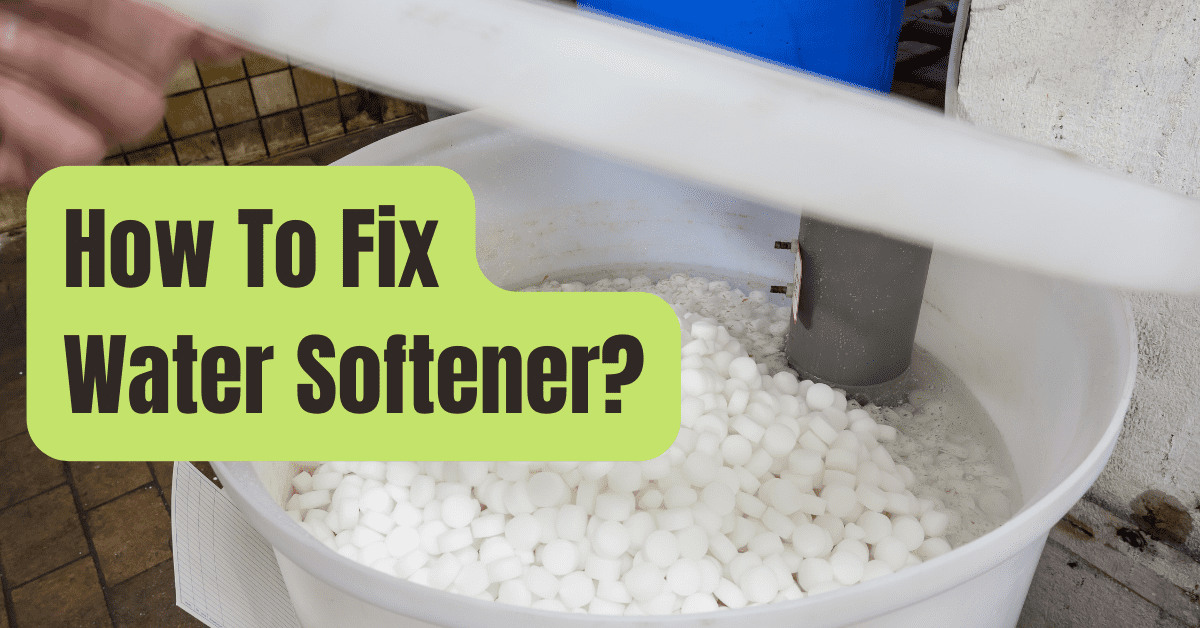Repair the brine tank, resin tank, and injectors in your water softener.
We’ll demonstrate how to repair your water softener if it stops functioning.
Water softeners can appear confusing, but we’ll break them down into their component parts and explain how to maintain yours in working order.
You may increase the longevity of your device by cleaning the resin bed and the tank.
Before discussing the repairs, let’s first take a quick look at how a water softener performs.
There are a few straightforward reasons why it can fail.
The Function of a Water Softener
Untreated water enters the brine tank, where it becomes sodium-saturated (salt).
The sodium-saturated water then enters the resin tank, where it is drawn to the sodium molecules by millions of small polystyrene beads and the surplus salt water is expelled.
The resin tank is then filled with unsoftened water once the brine tank has been refilled, and the calcium and magnesium minerals that cause hard water to form switch places with the sodium molecules and attach themselves to the beads until there are no more sodium molecules left to do so.
The water softener regenerates at this stage by removing the hard minerals from the beads and emptying the wastewater, which restarts the cycle.
Here are three simple remedies to restore the flow of your soft water.
#1. Brine (Salt) Tank Cleaning
Verify that there isn’t a hard dome or crust of salt within the brine tank.
Too much salt or salt that is added too regularly might produce the salt dome.
There will be a significant air pocket beneath, but it will seem that you have salt.
Use a broomstick to break up the salt, then discard it.
If there is any silt, vacuum it up.
If there is a brine well within the tank, clean it well with soap and water before rinsing it.
#2. Remove Iron Contamination From A Resin Bed
The resin bed that removes the hard water particles and replaces them with sodium can ultimately become “foul” if your water includes iron.
Run Iron-Out through the system to renew the bed.
Run your softener through a manual regeneration to clear the wastewater, then add brine to the brine tank in accordance with the instructions.
To accomplish this, locate the regeneration knob by removing the control valve’s cover.
Depress the knob with a flat-blade screwdriver, then turn it counterclockwise to “Service.”
#3. Clean The Injector For The Resin Tank
Injectors may get clogged with silt from contaminated salt.
To clean it, turn on the bypass valve on the softener to stop the water flow.
After that, manually regenerate the softener to lower the water pressure.
Finally, take off the softener head’s caps from both sides.
Clean the injector (on the right side of the head) and injector screen completely (left side).
Five Ways to Maintain the Health of Your Softener
- Use an iron remover and purified salt. Although regular rock salt is less costly, the pollutants it contains will end up costing you more over time. Rock salt may cause the brine tank to fill with inches of silt, which can block the injector and the control valve for the softener.
- Before virtually all of the salt in the tank has been used, wait to add salt. Fill the tank to no more than two-thirds capacity after that.
- To clean the resin bed and the components in the control valve, use Iron-Out once a year.
- Once a year, clean the brine tank. Even pure salt has impurities.
- Make sure the drain pipe for the softener is not shoved into a floor drain. To avoid unintentionally siphoning sewage into the softener, the end of the softener’s drain line should be above the grate of the drain.

Repairs For Water Softeners Might Be Cheaper.
Ask businesses whether they work on softeners by doing an internet search or checking the “Appliance, Repair” section of the yellow pages.
Tools Needed for This Project
Before you begin, prepare the equipment you’ll need for this DIY project.
This will save you time and hassle.
- Four-in-one screwdriver
- Bucket
- Buying vacuum
Materials Needed for This Project
By having all of your supplies prepared in advance, you may avoid hurried shopping visits.
Below is a list.
- Iron-Out










